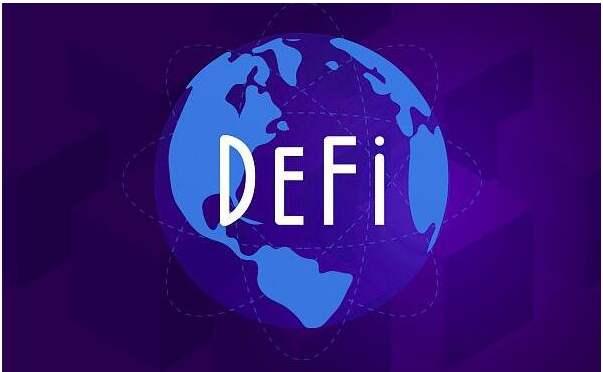Interpreting DeFi 2.0: Reshaping the Relationship Between Liquidity Providers and Protocols
Original Title: "A Simple Understanding of DeFi 2.0"
Reconstruction of Liquidity Relationships in DeFi 2.0
Over-exploitation of liquidity mining
The pace of DeFi is rapid. Last year, we witnessed a surge in DeFi, which adopted the liquidity mining model, igniting the entire crypto space. However, as the exploration of liquidity mining progressed, people gradually discovered its drawbacks. This short-term incentive model can lead some liquidity providers to over-exploit projects and protocols, even accelerating their demise.
In this model, the long-term interests of liquidity providers and protocols do not align, and this contradiction has resulted in slow growth for DeFi. Of course, this is just one of the reasons.
Against this backdrop, the concept of DeFi 2.0 emerged. Here, we do not argue about the definitions of 1.0 and 2.0, as it does not significantly change the essence of things. The term DeFi 2.0 is primarily used for convenience in introducing the new changes in DeFi and serves as a brief description of its evolution.
DeFi 2.0 changes the relationship between protocols and liquidity providers through new mechanisms, ultimately reconstructing the liquidity services themselves.
Liquidity Capture in DeFi 2.0
People generally focus on capturing protocol fees, but from the perspective of the long-term sustainability of protocols, liquidity capture is equally important, if not more so. The liquidity capture of protocols is an important part that distinguishes DeFi 1.0 from 2.0; another aspect is the improvement of capital efficiency.
Liquidity Capture
The reason DeFi can be called DeFi, aside from the underlying public chain infrastructure like Ethereum, is primarily due to the provision of liquidity. This is the prerequisite for DeFi to operate and the lifeblood that supports it. This is also why, in the summer of 2020, after Compound launched liquidity mining, it ignited the entire market.
As more than a year of practice unfolded, people saw the drawbacks of liquidity mining; short-term incentive models only encourage short-term behavior from liquidity providers. The issuance of additional tokens into the hands of liquidity providers often does not lead to a long-term mutually beneficial partnership with the protocol. Liquidity providers can withdraw at any time, leaving the protocol in disarray.
To address this issue, the concept of POL (Protocol Owned Liquidity) emerged, which refers to liquidity controlled by the protocol. Blue Fox Notes refers to this as "liquidity capture." There has even been the emergence of "liquidity layers" that focus on providing liquidity infrastructure for DeFi projects.
PCV and POL
The POL mentioned above refers to Protocol Owned Liquidity, a concept first practiced by Olympus DAO. However, Olympus has undergone significant changes since then.
Unlike the previously popular liquidity mining model in DeFi, one of the cores of Olympus DAO is PCV, or Protocol Controlled Value, which changes its relationship with liquidity providers. Olympus directs funds to the protocol rather than the team. The protocol uses these funds from early supporters to provide liquidity.
Olympus DAO issues discounted OHM tokens (bonds) to participants, obtaining LP token positions from liquidity providers, thereby capturing "liquidity." The treasury of Olympus DAO controls the liquidity; although its OHM supply increases, the more bonds it sells, the greater the liquidity it controls. As of now, Olympus DAO has over $460 million in liquidity.
 * (Olympus protocol has over $460 million in liquidity, DuneAnalytics) *
* (Olympus protocol has over $460 million in liquidity, DuneAnalytics) *
 * (Olympus protocol has a trend of popularity, DuneAnalytics) *
* (Olympus protocol has a trend of popularity, DuneAnalytics) *
The "liquidity" captured by the protocol is not freely controlled by LPs but is controlled by the protocol, which means that there will be no sudden disappearance of liquidity ("rug pull"), thus ensuring the exit possibilities for participants. At the same time, the protocol participates in liquidity provision, becoming a market maker and can earn trading fee income, which has exceeded $10 million to date.
 * (LP income captured by Olympus protocol, DuneAnalytics) *
* (LP income captured by Olympus protocol, DuneAnalytics) *
Better liquidity can enhance participants' confidence in continued participation, alleviating concerns about sudden liquidity disappearance, which was a common occurrence during the early DeFi mining era, leading to significant losses for many participants.
Of course, this is not completely safe; it is just relatively better than previous liquidity support. With the success of Olympus DAO, there are now over a dozen similar projects across various chains, and the risks involved are increasing. The Olympus DAO model cannot guarantee the absence of rug pulls.
Based on its successful practice, Olympus has also launched liquidity service products that can be adopted by other DeFi protocols. Other projects can achieve similar "liquidity capture" as Olympus DAO, while for Olympus, it can embed its OHM tokens into more protocols, thus creating more application scenarios. This approach has even led to the concept of Liquidity as a Service. This is the further evolution of DeFi liquidity solutions mentioned below.
Protocols Focused on Liquidity Provision
The concept of LaaS (Liquidity as a Service) mentioned above allows other DeFi protocols to purchase liquidity from the market, which will compete to provide higher quality and better-priced liquidity, forming a relatively balanced state.
Tokemak is one such protocol focused on liquidity supply. In short, it aims to become a market maker for DeFi projects, serving as the infrastructure layer for liquidity provision in DeFi.
On the Tokemak protocol, it can collect various idle tokens, and participants can provide single-sided tokens, including ETH, DAI, and tokens from different protocol projects. These tokens can form token pairs to provide liquidity. Each token asset has its own "reactor" (when liquidity providers deposit a certain token asset, they receive a corresponding amount of t-assets, which can be redeemed 1:1). The Tokemak protocol token, TOKE, serves to guide liquidity and can also be understood as tokenizing liquidity. TOKE controls the flow of liquidity.
For DeFi projects, Tokemak allows them to build "token reactors" at a lower cost to create sustainable liquidity; for liquidity providers, they can provide single-sided token liquidity without worrying about impermanent loss. Ultimately, it hopes that various protocols will no longer build liquidity pools themselves but will obtain liquidity through Tokemak.
For liquidity providers, depositing tokens into the "token reactor" can earn rewards in the protocol token TOKE. These deposited "reactor" token assets are paired with assets like ETH or DAI and deployed to DEXs. The tokens deposited in the "reactor" can be redeemed 1:1. So, if there is impermanent loss, who bears it? This involves the TOKE token. The TOKE token is the protocol token of Tokemak, which not only has governance functions but is also used as rewards for liquidity providers. The TOKE token can capture trading fees from liquidity, which is key to supporting its value. At the same time, it is also used to mitigate impermanent loss.
If there is impermanent loss when a certain "reactor token" is withdrawn, TOKE will provide support for compensation. Tokemak uses a collateral network to mitigate impermanent loss. In Tokemak's design, in addition to liquidity providers, there are also liquidity guides. Liquidity guides stake TOKE to guide liquidity, and in this process, they will receive rewards in TOKE tokens. If impermanent loss occurs, it will first be supported by the protocol treasury, and finally by the TOKE rewards of the TOKE stakers (liquidity guides); if that is still insufficient, it will be supported by the TOKE of the TOKE stakers (proportionally).
For the Tokemak protocol, its long-term goal is to build a liquidity and market-making service without the involvement of third-party participants. Its method is to accumulate more and more value in liquidity provision services, and then this value transforms into liquidity provision. Of course, the premise is that it has sufficient network effects to accumulate enough value in this process. Once the value breaks through a critical point, it may produce a black hole-like effect. However, before reaching the critical point, it will go through many stages, which is not an easy task.
The Fei protocol also attempts to provide liquidity services, collaborating with some DeFi projects to offer liquidity leasing. For example, it temporarily deposits its tokens into other DeFi liquidity treasuries and then provides liquidity for "project token/FEI" on DEXs. Of course, FEI can also charge certain fees and transaction fees, but there is also the potential for impermanent loss.
Optimization of Asset Efficiency in DeFi 2.0
Due to the disintermediation model of DeFi, it often requires providing over-collateralized assets. This leads to low asset efficiency.
The Abracadabra model is similar to MakerDAO, both using over-collateralized assets to generate stablecoins. However, unlike MakerDAO, the assets collateralized by Abracadabra are yield-bearing assets, which effectively increases the efficiency of capital for users of collateralized assets. This is because these collateralized assets continue to earn yields. These yield-bearing assets include yvYFI, yvUSDT, yvUSDC, xSushi, etc. Over-collateralized assets of this type can generate its stablecoin MIM.
In addition to improving capital utilization, it also reduces the likelihood of liquidation, as these collateralized assets will appreciate in value. This is an innovation based on user demand.
Risks of DeFi 2.0
Due to the existence of numerous DAO to DAO combinations in DeFi, there are greater composability risks. For example, in protocols like Abracadabra, if the protocol of its collateralized assets encounters issues, then it will also face problems. Therefore, while we see its advantages, we must also recognize its potential risks.
Moreover, DeFi 2.0 cannot guarantee the absence of rug pulls; risks are omnipresent until it forms its own sustainable liquidity. Therefore, do not be misled by the concept of DeFi 2.0, as it is equally filled with high risks.
DeFi 2.0 Essentially Aims to Improve the Infrastructure Layer of DeFi
The infrastructure of DeFi includes not only public chains like Ethereum but also foundational Lego blocks such as DEXs, lending, and derivatives; it also includes the liquidity that supports these models, which is itself an important infrastructure layer for the sustainability of DeFi.
The core of DeFi 2.0 is to turn liquidity into the infrastructure layer of DeFi, thereby making DeFi more sustainable. From this perspective, DeFi 2.0 is an inevitable evolutionary trend for DeFi. DeFi is like a living organism; it must continuously grow and improve its various parts to ultimately become a self-reinforcing and sustainable technological evolution trend that does not rely on any intermediaries.











